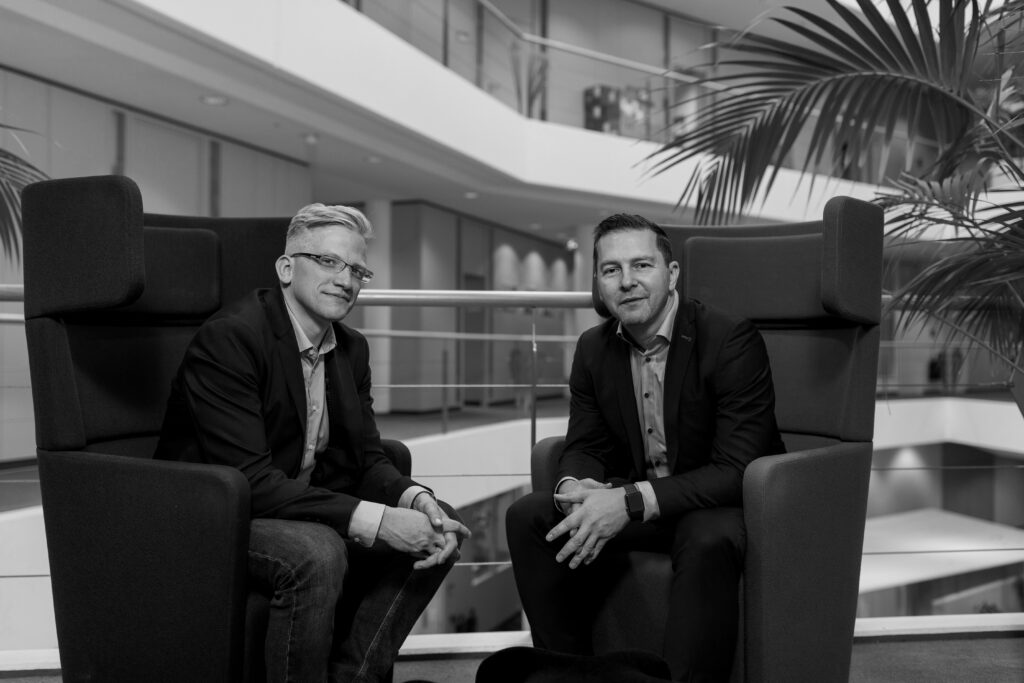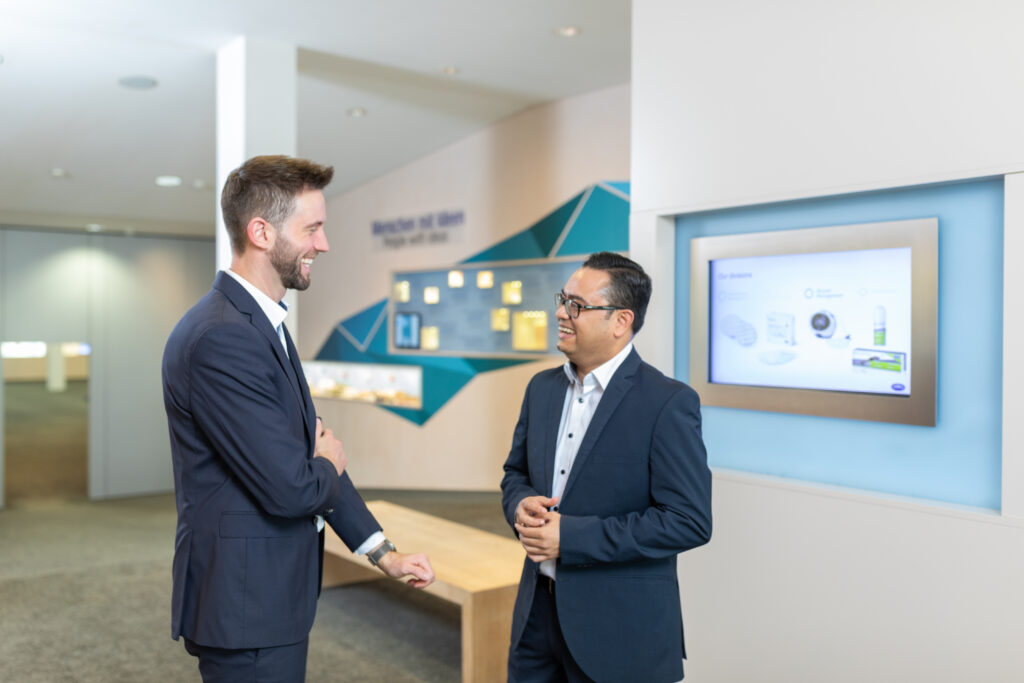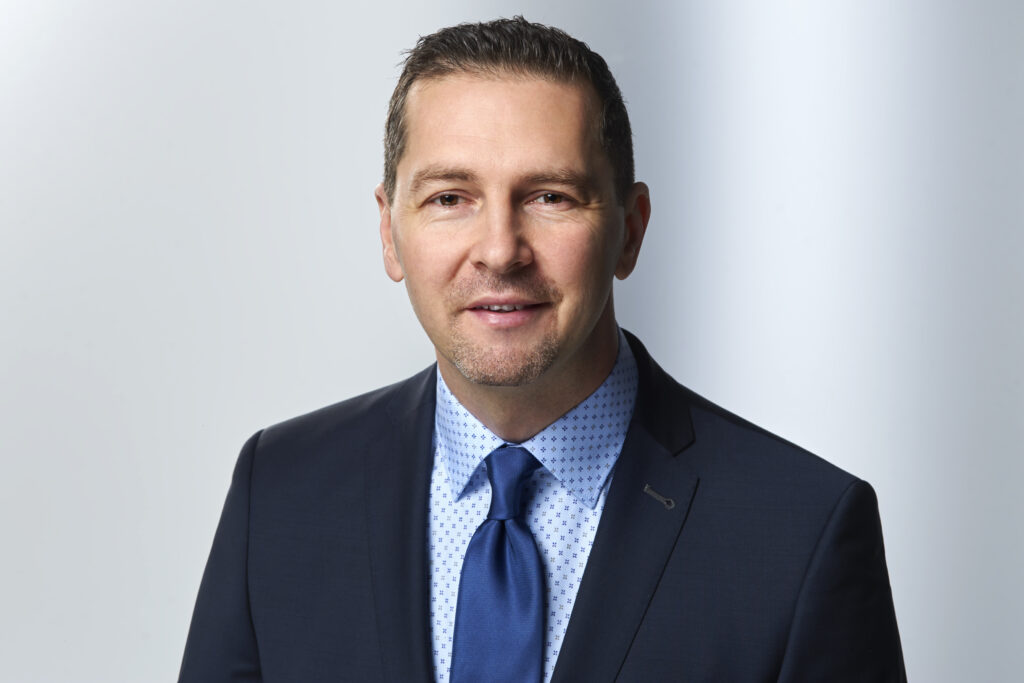
HARTMANN GROUP HAS BEEN AT THE FOREFRONT OF HEALTHCARE INNOVATION FOR NEARLY 200 YEARS. TODAY, TECHNOLOGY TRANSFORMATION AND NEW DIGITAL BUSINESS MODELS ARE ENABLING IT TO “GO FURTHER FOR HEALTH”. Tech For Good MET WITH CIO SINANUDIN OMERHODZIC AND HIS TEAM TO FIND OUT MORE.
Take a walk around the entrance hall of HARTMANN GROUP’s sprawling German headquarters and you’ll quickly be immersed in the company’s long and fascinating backstory.
Inside the front door is a life-size image of Paul Hartmann Sr., the man who – in the middle of the 19th century – founded the Paul Hartmann Bleaching, Dyeing and Dressing Company, the forerunner to the thriving healthcare products and solutions business which exists today.
Further on, adorning the walls are timelines that stitch together multiple HARTMANN milestones and highlight the groundbreaking innovations that make up its history. From the very beginning, Paul Hartmann set his store out to engage the era’s leading medical minds and pioneer solutions to radically improve healthcare provision. In tandem with Sir Joseph Lister, the British surgeon who invented the first dressing with a germicidal effect, and Victor von Bruns, a German who designed groundbreaking dressing material using cotton wool, Hartmann helped revolutionise wound management, in turn saving millions of lives.
This quest for innovation remains hardwired within HARTMANN GROUP. Flash forward to 2020 and it is the rapid onset of new technologies that is remodelling how it operates, innovates, and delivers. Change has been a constant for HARTMANN over nearly 200 years and, today, technology and digital transformation are among the main forces behind its ambition to “go further for health”.
In the middle of HARTMANN’s Heidenheim base is a vast and somewhat imposing conference room. This is where the leadership team communicates its top-level objectives and strategy to the wider staff, making it one of the vital hubs on the HARTMANN campus.
Sinanudin Omerhodzic, HARTMANN’s Chief Information Officer, is one person who has regularly taken to the podium. Since joining three years ago, Omerhodzic has led the group’s IT and technical implementation initiatives and the shift to modern, digital-led business models. Last November, he was included among the top 10 large-enterprise CIOs in Germany by the popular magazine ‘CIO’.
“Innovation is key in the era of digitalisation,” Omerhodzic tells Digital Bulletin during a wide-ranging interview. “What we’ve seen in the last 10 or 20 years is a huge change in business but also in society, around how technology impacts our lives. This is a time where every function and business unit in organisations like HARTMANN gets impacted by technologies.”

The company boasts a broad portfolio of healthcare products and devices in its three principal business areas: incontinence management, disinfection management and wound management. Sold to hospitals, nursing homes and personal users in more than 100 countries worldwide, the products accounted for the majority of HARTMANN’s €2 billion+ ($2.3 billion+) 2018 revenues and are recognised as market-leading by patients and professionals.
But the healthcare sector, and as a consequence HARTMANN, is currently facing some steep challenges. Chronic, or noncommunicable, diseases are on the rise while ageing populations are putting strain on healthcare systems which in many instances are underfunded. How can organisations like HARTMANN help find solutions to these difficult problems?
Omerhodzic believes the use of advancing technologies will become more and more valuable and he cites a potentially transformative idea currently being explored by HARTMANN. Emerging from its infection management division, the pilot aims to tackle the spread of hospital infections; more than four million patients contract such infections in Europe annually, with around 37,000 mortalities.
“This is a huge issue on the one hand, but also on the other hand creates a huge cost for the hospitals in treatment for people who get infected,” Omerhodzic explains. “One of our products is called Sterillium, an alcohol-based disinfectant for hygienic and surgical hand disinfection and it’s been on the market for over 50 years, helping hospitals utilise liquids to disinfect hands.
“But now we are thinking of going even beyond the product. We are experimenting with how we could utilise artificial intelligence (AI) and IoT technologies to analyse the data available in hospitals and detect infections. For example, when the doctors are doing patient visits in the morning and creating the report – we should analyse and understand the data and then check medical libraries for potential patterns or indications of symptoms that were not discovered immediately. The software and AI can then map those patterns, maybe indicating potential infections.”
Siemens
Omerhodzic rates AI as one of the highest-potential technologies in healthcare and recent research appears to support this claim, with the ‘Global AI Market in Healthcare’ sector set to grow by 28% year-on-year until 2023, according to a report by Technavio.
On top of helping to identify infections, he sees AI, IoT and data analytics use cases in supply chain and manufacturing, where future demands could be predicted by analysing internal data, such as customer history, and external data, like weather conditions and epidemics. HARTMANN recently developed a smart fulfilment solution for a pilot in Spain, where if a product was running low on stock IoT sensors would detect that, automatically triggering an order. This helped optimise process efficiency and offer better customer service. Yet Omerhodzic sees AI deployments going even further.
“Let me mention another one which is a little bit more futuristic,” he teases. “In the areas outside of big cities, we see a shortage of specialist doctors but demand is increasing through demographic change, hence medical support and treatment is in danger. AI could help to make a first level of diagnosis so the patient won’t need to travel to the city to talk to specialists.”
***
In truth, the possibilities offered by technologies like AI are impossible to predict. HARTMANN is diligent enough to widen the scope of its analysis to other areas of innovation, including IoT (the Internet of Things), making its products ‘smarter’ – “it sounds very strange, but even a plaster can be smart” – and the modernisation of applications for a future where the entire ecosystem will be connected via one healthcare platform for a more seamless customer experience for institutions, professionals and patients.
In order to maintain HARTMANN’s position at technology’s cutting edge, Omerhodzic has rethought the role of IT to become more innovative – and central to this has been the creation of the Technology Leader role. There are three different Technology Leader roles: Technology Leader Process, Technology Leader Market and Technology Leader Scout.
These jobs are at the transformation coalface for HARTMANN IT. The Technology Leader Process takes charge of internal process efficiency, the Technology Leader Market focuses on customer-driven innovation, while the Technology Leader Scout assesses the viability of recently developed and emerging technologies. All Technology Leaders are supported by the wider HARTMANN IT team, which boasts deep expertise in every discipline.
“This is something that is very unique for HARTMANN IT,” says Alexandra Fibitz, Technology Leader Scout for wound management. “I am constantly screening the market for new technologies; AI, IoT and big data, for example. We adapt them to our HARTMANN work, include them in all of our projects where applicable and see where they fit our needs, and how we can integrate them in our solutions to help the patient.”
Patrick Feil, a Technology Leader Market, adds: “This is a complete transition phase we are currently in, and we at HARTMANN IT don’t see it as a tremendously complex change process – we really see it as an outstanding chance. The changes in our organisation are not only related to roles, responsibilities and new innovative structures, it’s also about getting new technologies, methodologies and toolsets into our teams. This is exactly what we require to achieve the digital goals in collaboration with our customers.”
Feil is hinting at the wider overhaul implemented by Omerhodzic in his role as CIO. While innovation is supported by the Technology Leaders, efficiency on the corporate IT side is maximised through an agile, product-oriented structure that involves designers, developers and analysts forming teams in a new IT operating model that oversees the end-to-end delivery of products.
In contrast to the previous methodology built around project rather than product management, Omerhodzic believes this way of working lends itself to increased levels of teamwork, focus and knowledge-retention. It’s a foundational part of the ‘OneIT’ strategy at Hartmann – one associated IT organisation working across the entire business.
Subhrajyoti Bose, Director of IT Strategy and Architecture, has had heavy involvement along the transformation journey.
“Our IT strategy is to transform IT from being an operational support organisation acting on requests to one that is proactively watching the market for technology changes, and bringing in the best technologies and methods in the world to enable business innovation and the future corporate strategy at HARTMANN,” he comments.
“When we look at the markets, it is clear that the innovations of the future are not only centred around the product itself but also encompass integrating digital technologies into the products and deriving business intelligence and insights from the data to drive customer value.”
***
HARTMANN is pushing on all fronts to lead in the digital healthcare world of the future – yet, as with all industry players intent on bringing about effective transformation, the role of technology partners cannot be underestimated.
SAP has been a long-time technology partner to HARTMANN, with the two companies first collaborating in the 1980s when SAP – now a billion-dollar software corporation with tens of thousands of clients all over the world – made HARTMANN just its 37th customer. Over the years they have worked on a range of integrations and their relationship today covers a broad spectrum of services.
SAP
HARTMANN’s integrating S/4HANA, SAP’s most advanced enterprise resource planning (ERP) system yet, as the backbone for its internal systems. In addition, HARTMANN’s moving to cloud-based tools with SAP SuccessFactors, which delivers HR solutions, and SAP Ariba, the industry-leading procurement software. Each implementation is supported by SAP Services, guaranteeing the sustainability of every product and supporting HARTMANN’s data-led business models and digital transformation.
“SAP is going to be very key to us to move to the next area with S/4HANA and optimise and make our processes more efficient,” outlines Omerhodzic.
“It’s not just about SAP’s technology. On one hand we have a key technology partner, but on the other they understand and support our vision in healthcare. They co-innovate with us and support us as we evolve our products and services as we ‘go further for health’ and, in the end, save patients’ lives.”
That versatility applies equally to Siemens, another technology partner for HARTMANN. With its own expertise in the medical devices and healthcare segment, Siemens offers HARTMANN comprehensive services around product lifecycle management (PLM), including the management of product data, material data, variant management and data for regulatory compliance.
Due to new legislation in the healthcare market, internal processes at HARTMANN had to be adapted. Siemens has been chosen as vendor, and with its Teamcenter application suite it designed the internal processes in accordance with the new regulations. Omerhodzic believes that the partnership will continue as he is very satisfied with the cooperation.

“There are various opportunities because this [Siemens] is a very large company with a lot of competencies and a lot of experiences,” he adds. “So far we have been working very closely together on the PLM side, and how we document and digitalise the PLM process as such.
“But we are also thinking now to see other opportunities when it comes to Healthineers [Siemens’ med-tech arm] and to see how its ecosystem can collaborate with our ecosystem, and how we could maybe even get some more benefits.”
***
Every digital transformation story serves a greater purpose. For HARTMANN, that purpose is transparent: to improve the quality of lives and, ultimately, save them.
“I think this is a very rewarding experience,” Fibitz states. “If I’m sitting at my desk, if I’m having meetings, if I’m doing my work – I always know at the end that I’m helping the customer, who is for us the patient. So if I think about my grandparents, or about my parents, for example, they are getting older – that’s life – but I know that with our products, we can at least make lives easier and help them experience a little bit more confidence and convenience.”
Omerhodzic is now in a position to see the results from seeds sown over the last three years – but that doesn’t mean he or HARTMANN will be resting on their laurels any time soon.

In December, the company outlined its five-year transformation programme built around innovative strength, competitive strength and process efficiency, also promising further investment in its digital infrastructure. The end goal is international leadership in its three core areas of incontinence management, infection management and wound management.
“I’m 1000% committed to an organisation,” Omerhodzic concludes. “There is no 9-to-5 job in my life. But if you have a strong commitment, you need to also strongly believe in something, otherwise you can’t go the extra mile. That means you need to have a strong purpose, and HARTMANN has one.
“You, as an IT expert, really have the chance, working for HARTMANN, to help save patient lives and utilise its technologies. The company is very open-minded, is welcoming to people and is very culturally involved in terms of willing to make you think. That’s maybe the reason it has been successful for 200 years.”
If HARTMANN continues to wed its purpose, innovative spirit and technological knowhow to “go further for health”, then the industry is in safe hands for a few more centuries yet.



